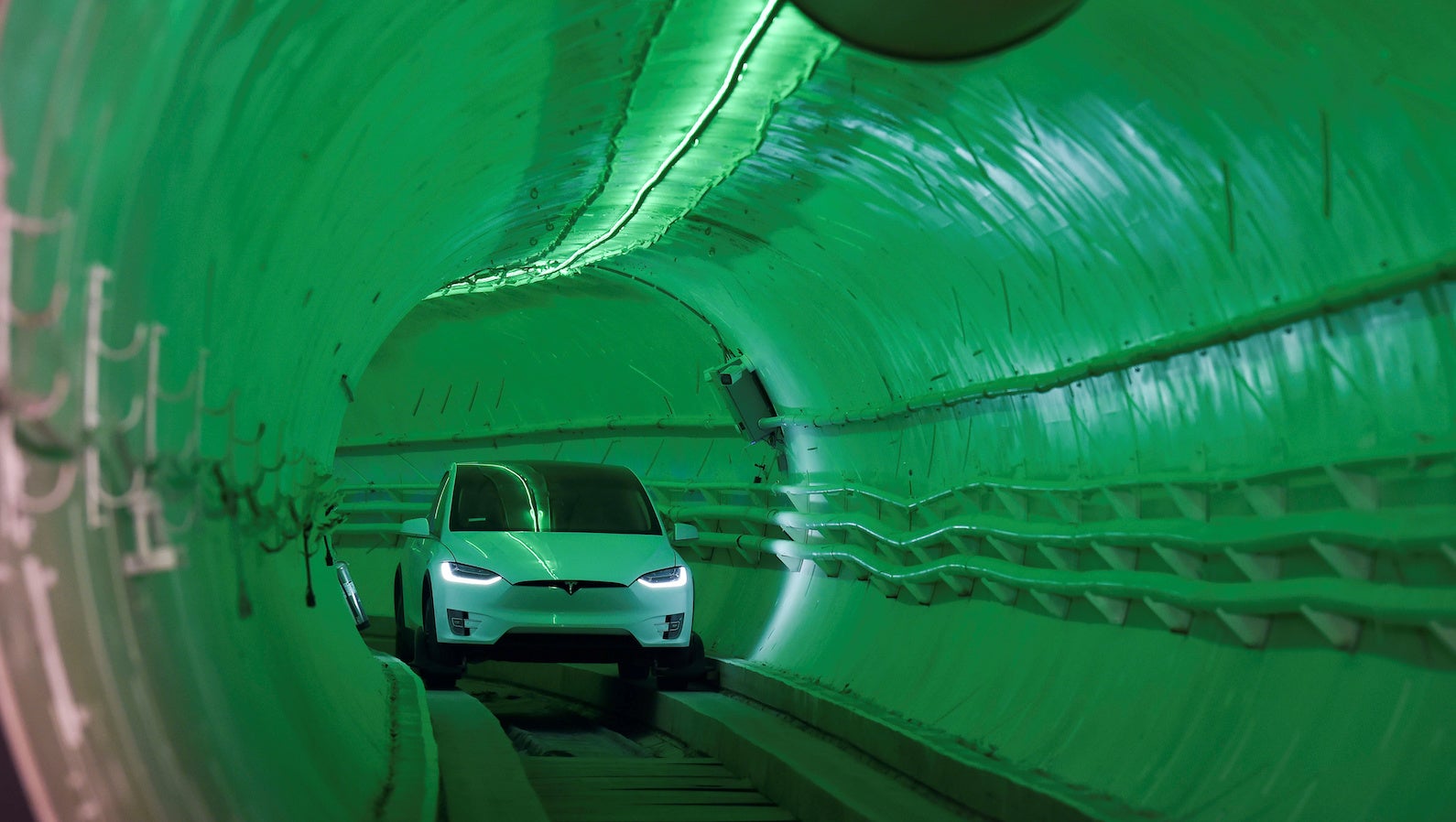Elon Musk’s tunnels could fix congestion. But not in the way you’d expect
Like so many dubious ideas, it started with a tweet. In December 2016, as the entrepreneur and engineer Elon Musk sat in standstill Los Angeles traffic, he took to social media to posit a solution:


Like so many dubious ideas, it started with a tweet. In December 2016, as the entrepreneur and engineer Elon Musk sat in standstill Los Angeles traffic, he took to social media to posit a solution:
Two years on, Musk is still digging. The Boring Company, also known as TBC, has since begun tunnel-based projects in US cities including Las Vegas, Los Angeles, Chicago, and Baltimore. The first mile-long tunnel in Las Vegas is expected to be fully operational by the end of 2020, Musk announced in a tweet on Friday, after digging began in November. (The tunnel was originally slated to open in late 2019.)
At a glance, these projects all seem exceptionally unlikely to fix congestion. Details are hazy, but Musk’s plans involve driving a high-speed Tesla underground to escape surface-level traffic. Except the tunnels in their current form are too narrow to allow more than one car—even if the journey time is only a matter of minutes, entering and exiting the vehicles is likely to introduce significant congestion.
One solution involves making the tunnels so prohibitively expensive that most people will not be able to use them. But as anyone who has ever watched TSA PreCheckers glide past the airport security line knows, you don’t fix congestion writ large by allowing a small number of wealthy people to circumvent the system.
To really ease traffic, Musk needs to find an option that moves people away from their cars entirely, instead of just speeding up part of their journey. Tunnels can be part of that, as they are in cities such as London, Stockholm, and Berlin. The other part, and what America needs, is more underground rail.
This is actually good news for the Boring Company, if not necessarily for Tesla devotees. Musk could fix congestion with tunnels—if he used his technology, which could massively reduce the cost of tunnel-building, to establish better underground rail. He would need to make some alterations—a significant part of the current savings come from having much smaller tunnels—but the basic technology is ripe for repurposing.
There are lots of reasons why the US doesn’t have good public transport, but the steep costs of building new infrastructure is high on the list. Tunnels are particularly pricey, with a stop-start process where digging must be paused to install wall reinforcements. Musk’s boring machines should eventually make reinforcement a continuous, automatic process.
The most exciting element of the Boring Company is its potential to build inexpensive tunnels all over the US—not as a way to move people along the road faster, but as a way to get them off it altogether.